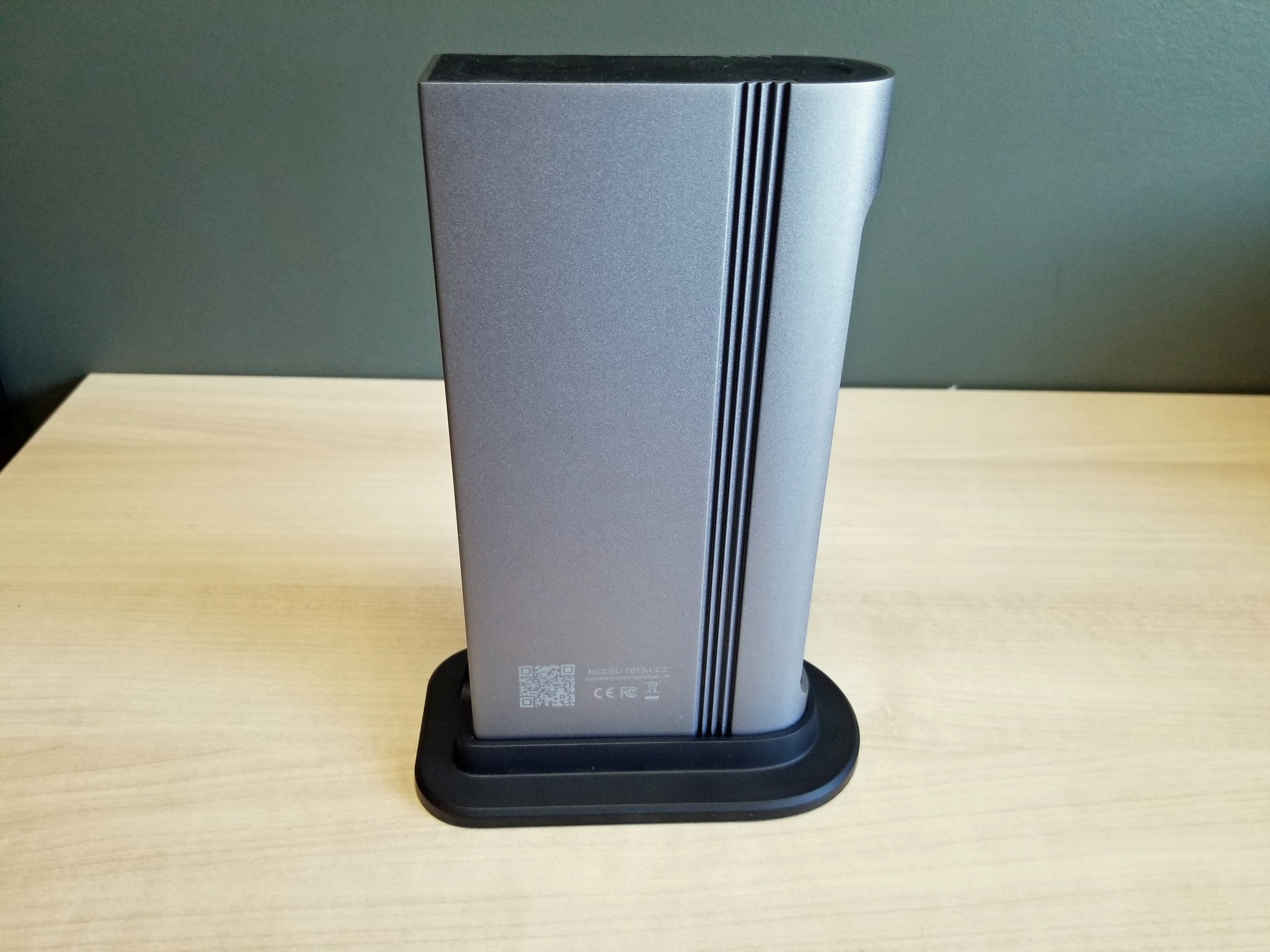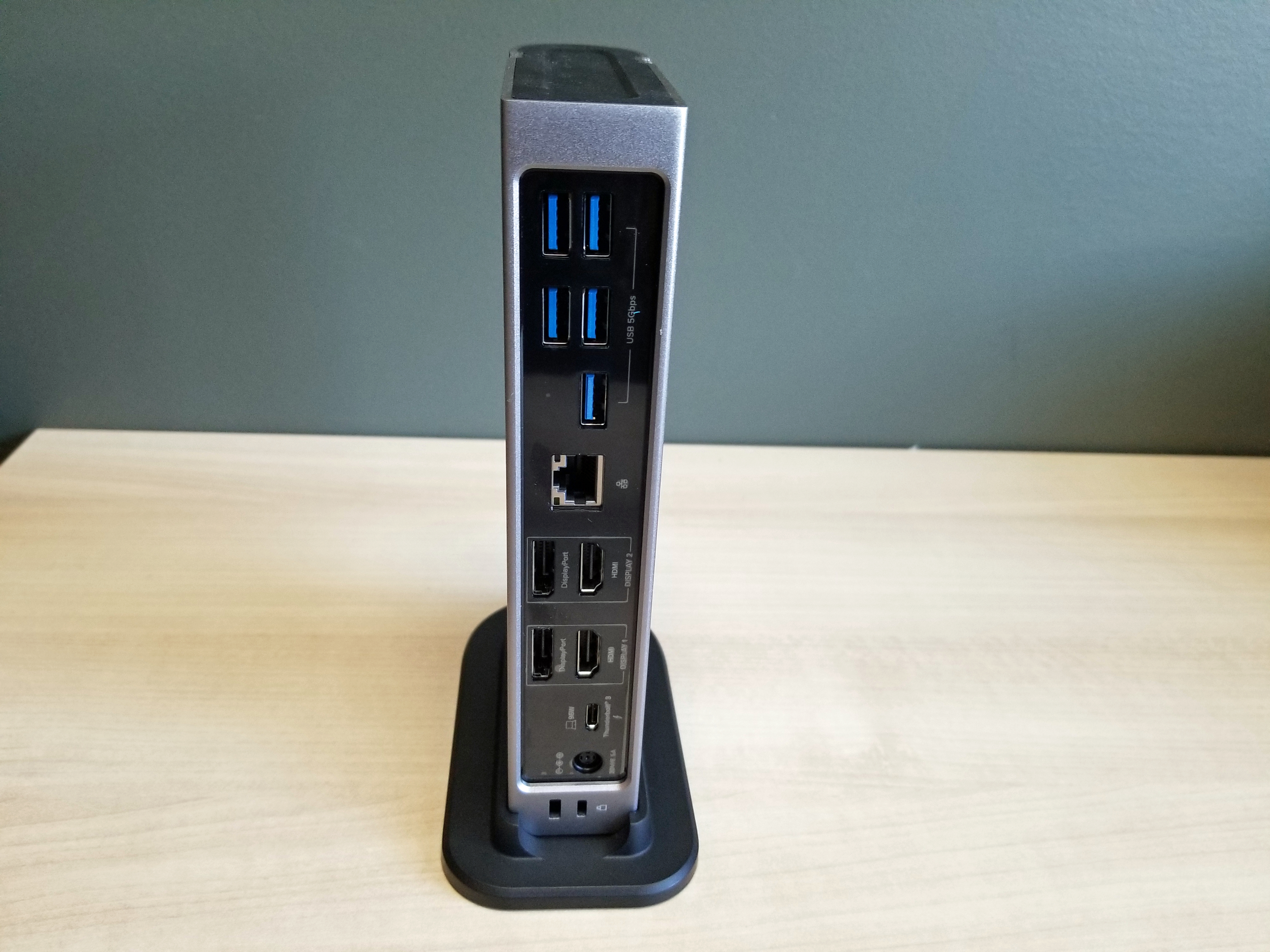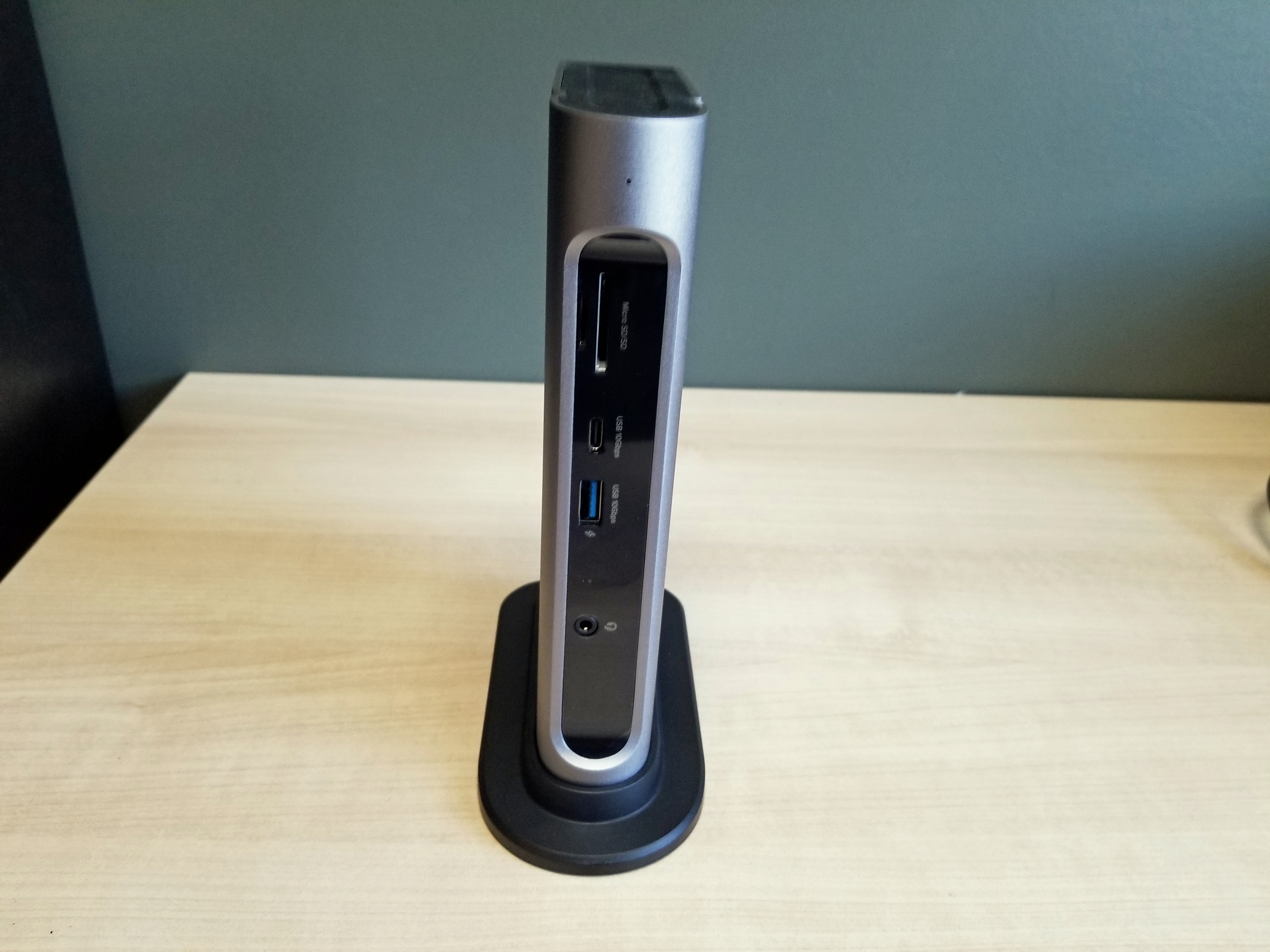Plugable TBT3-UDZ Docking Station Tested; Dual 4K, 96 Watts and 10 Gbps Connections
Thunderbolt 3 dock can power a MacBook Pro and output to two UHD screens.
If you need to connect your laptop to one or more external monitors, along with peripherals, there are a slew of docking stations on the market, but most have a limited number of output options, either giving your HDMI or DisplayPort or, in some cases, even DVI, but rarely more than one choice per screen. Plugable’s new TBT3-UDZ dock gives you a ton of flexibility, outputting to dual monitors at up to 4K, 60Hz with a pair of HDMI and DisplayPort connections., along with 96 watts of charging power and 7 USB ports, two of which can transfer at up to 10 Gbps.
Available starting today for $299 ($249 on sale at Amazon), the Plugable TBT3-UDZ connects to your laptop via Thunderbolt 3 or via USB-C alt mode if that’s all your laptop has. Its 96-watts of power delivery is more than enough to juice a MacBook Pro or another USB-C-powered laptop such as a Dell XPS 13, Lenovo ThinkPad X1 Carbon or another of the best Ultrabooks.
It’s important to note that the Plugable TBT3-UDZ and other Thunderbolt 3 docks differ significantly from the less-expensive USB docking stations you can often find for less than $100. The lower-cost docking stations use DisplayLink compression technology to allow your computer to output video over a standard USB Type-A or Type-C connection and, while that makes them compatible with even older PCs, it also takes up processor cycles for the compression, which can result in lag, depending on what you’re doing. Thunderbolt 3 and docks provide direct access to your laptop’s GPU, which leads to better performance and less tax on your processor.
The 8 x 4 x 1.4-inch Plugable TBT3-UDZ is a slim and attractive device for your desk. The matte aluminum chassis gives the docking station a premium look, and the included stand gives you the flexibility to either prop it up vertically or lay it down horizontally.

The back of the TBT3-UDZ is filled with ports, including five USB 3.0 Type-A ports, gigabit Ethernet, two HDMI and two DisplayPort outs (you can only use two of the four at once), a barrel connector for plugging into the power brick, and an upstream Thunderbolt 3 port that connects to your laptop. There's also a Kensington lock slot.

The front of the Plugable TBT3-UDZ has a USB-C 10 Gbps port, a USB Type-A 10 Gbps port, an SD card reader, a microSD card reader and a 3.5mm audio jack. Having two different card readers is a real standout feature because many docks just give you the full-size SD card opening and then require you to use an adapter if you want to read or write to microSD cards. However, considering that so many devices, including Raspberry Pis, phones, tablets and Nintendo Switches, use microSD cards (see best Raspberry Pi microSD cards), it’s more important to have that slot.

I had the chance to test out the Plugable TBT3-UDZ with a ThinkPad X1 Carbon (6th Gen) and a pair of 4K monitors. The docking station worked seamlessly with my ThinkPad, installing drivers automatically as soon as I connected it to the notebook’s Thunderbolt 3 port, using the included 2.6-foot cable.
Get Tom's Hardware's best news and in-depth reviews, straight to your inbox.
The performance you get will obviously vary based on the CPU and graphics card in your laptop. However, in my case, I had no problem playing a 4K 60 fps YouTube video smoothly at its native resolution on one screen while working on the other. The USB power delivery was more than adequate to power and charge my laptop.
The Plugable TBT3-UDZ isn’t the cheapest Thunderbolt 3 dock on the market as some competitors hover around $200 or even a little less, but it is by far one of the most versatile, powerful and stylish.
Its 96-watts of output make it ideal for MacBook Pro users or anyone who wants to charge and output data over a single wire. Perhaps more importantly, the inclusion of dual 10 Gbps outputs allows you to write to high-speed external SSDs that most docking stations don’t support.
Avram Piltch is Managing Editor: Special Projects. When he's not playing with the latest gadgets at work or putting on VR helmets at trade shows, you'll find him rooting his phone, taking apart his PC, or coding plugins. With his technical knowledge and passion for testing, Avram developed many real-world benchmarks, including our laptop battery test.
